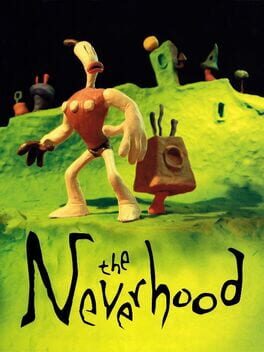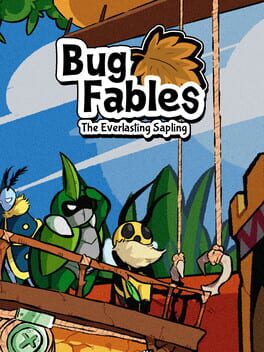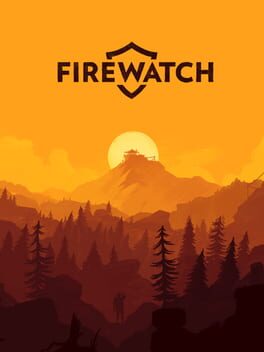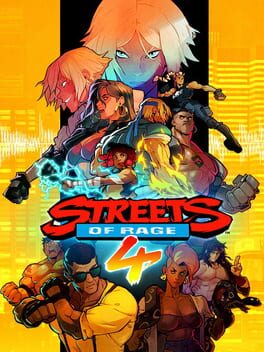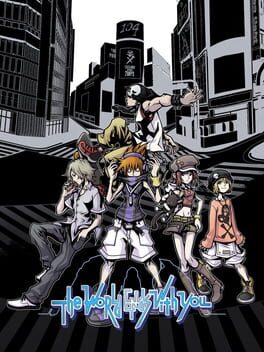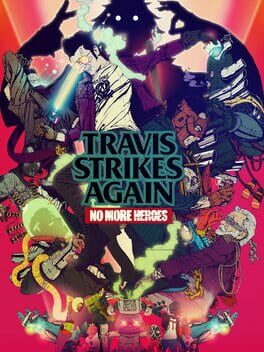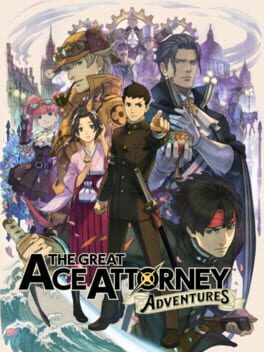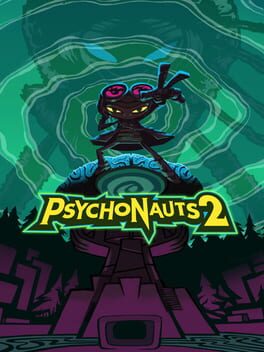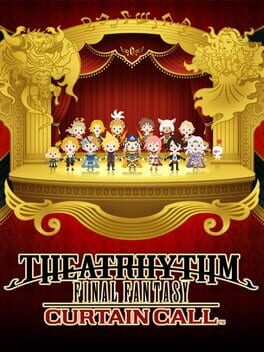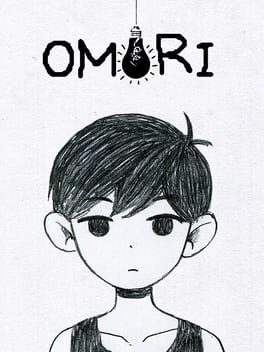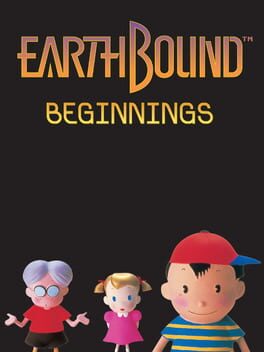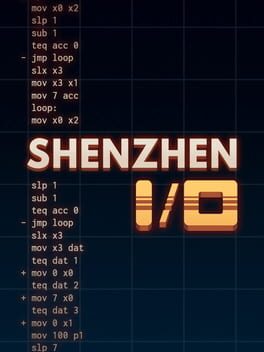chump
1996
I'm willing to tentatively call this one an essential experience. Portraying a claymation world from a first-person perspective using 90s FMV creates such a strikingly lonely atmosphere that it's hard to say the combination is anything less than genius. The simple event of coming across a character who actually speaks out loud in the Neverhood is legitimately jarring in a way that few, if any, games are able to really capture. But that's not all: perhaps the game's most infamous feature outside of its presentation is the (both figuratively and literally) biblical lore dump that you can access right out of the gate. It takes about as much time to read this actual wall of text as it does to play through the rest of the game, and it's not like the game's story makes more sense if you've read it or anything. To finish the game you at least need to have walked down the hallway that contains this background info, which is a time consuming effort in itself, but it also serves another purpose. The game puts so much emphasis on asking the player to question what's really relevant. There's plenty of objects in the world that you can interact with but don't actually do anything, save for maybe setting up a joke. It goes both ways, too. Without spoiling anything, there's one really egregious example where one puzzle doesn't activate unless you've tried a particular incorrect solution for an earlier puzzle. The initial lore dump does a great job at setting this up. To some, it's an integral part of the Neverhood, indicative of its wildly distinct tone and important to the events of the story. To others, it's a joke at the expense of the player that the devs put in just because they could. It's a worthwhile inclusion for sure, but the gameplay that it represents certainly isn't perfect. It's, at the very least, an interesting puzzle philosophy, and you could make an argument that it's necessary considering the absence of a standard point-and-click 'use item' feature severely limits the puzzle design options, but it falls apart as the game progresses. Soon after the feelings that the Neverhood evokes set in, all the game really asks you to do is to have a pen and paper ready and be willing to write stuff down. To me, this isn't really all that valuable for an adventure game that takes place in a world that's otherwise endlessly intriguing. It's not like anything else, and that's more than worth the price of admission, but I can't see myself ever feeling the need to come back.
The biggest pitfall of the spiritual successor, in my opinion, has always been the fear of upsetting a fanbase that it has no actual allegiance to. While indie games have the potential to be experimental, pioneering, boundary-pushing, spiritual successors are often derivative, inoffensive, fine but forgettable. The big irony here is that the OG Paper Mario can be looked at as the greatest spiritual successor of all time. While it's not technically a sequel to Super Mario RPG, it uses the concepts established in it as a springboard towards a totally unique identity. The half-baked action commands became the basis for one of my favorite turn-based combat systems ever, a strategic game of simple arithmetic and 1s and 2s instead of obtuse number crunching. The idea of an explorable Mushroom Kingdom was adapted into a cozy, easy to look at world where even the most basic of Mario enemies are given carefully considered characterization. It's a great game because it took lessons away from what came before it, not because it was trying to make Super Mario RPG, again.
Now: Bug Fables. What makes up its identity besides just being a spiritual successor to Paper Mario? The most obvious answer here is that it's party based. This doesn't separate its combat all that much from its spiritual predecessor, as the battles play out in similar fashion, but it's part of a larger effort to "RPG-ify" Paper Mario. Along with the party, the story's played more straight than goofy for example, and there's also a ton of sidequests. Most of these elements aren't very successful: the three main characters are poor even before their clumsy attempts at arcs, the sequence of events is dull, the setting isn't all that imaginative, as you've probably seen it done half a dozen times in various PG-rated films. But, there's one thing here that actually resonated with me, and, ironically, it's one of the only major parts of Super Mario RPG that Paper Mario didn't really attempt to adapt in any form: optional content. There's a surprising amount of secret locations, bosses, and abilities to find in Bug Fables, and a lot of them are accessed through sidequests that don't seem all that special at first glance. This really adds to the world in a way that's perpendicular to how Paper Mario does it, but there's also a problem with it. You need to get through 2 or 3 chapters of fighting recolored Goombas and Koopas to actually get to the good stuff, which is pretty representative of the game as a whole. It's much more interested in showing off what makes it like Paper Mario than what makes it unlike Paper Mario, which doesn't sit right. The original Paper Mario wasn't satisfied in just being an acceptable sequel to its spiritual predecessor, so why should this game be?
Now: Bug Fables. What makes up its identity besides just being a spiritual successor to Paper Mario? The most obvious answer here is that it's party based. This doesn't separate its combat all that much from its spiritual predecessor, as the battles play out in similar fashion, but it's part of a larger effort to "RPG-ify" Paper Mario. Along with the party, the story's played more straight than goofy for example, and there's also a ton of sidequests. Most of these elements aren't very successful: the three main characters are poor even before their clumsy attempts at arcs, the sequence of events is dull, the setting isn't all that imaginative, as you've probably seen it done half a dozen times in various PG-rated films. But, there's one thing here that actually resonated with me, and, ironically, it's one of the only major parts of Super Mario RPG that Paper Mario didn't really attempt to adapt in any form: optional content. There's a surprising amount of secret locations, bosses, and abilities to find in Bug Fables, and a lot of them are accessed through sidequests that don't seem all that special at first glance. This really adds to the world in a way that's perpendicular to how Paper Mario does it, but there's also a problem with it. You need to get through 2 or 3 chapters of fighting recolored Goombas and Koopas to actually get to the good stuff, which is pretty representative of the game as a whole. It's much more interested in showing off what makes it like Paper Mario than what makes it unlike Paper Mario, which doesn't sit right. The original Paper Mario wasn't satisfied in just being an acceptable sequel to its spiritual predecessor, so why should this game be?
2016
This review contains spoilers
Real life isn't satisfying. Going out into the woods for an entire summer doesn't mean all of your personal woes automatically get solved. Obsessively pursuing what you perceive to be a conspiracy against yourself doesn't mean you get a neatly-wrapped conclusion. Fires don't wipe the land perfectly clean, but instead leave suffocating ash and smoke in their wake. Going out of your way to fix a particular problem more often than not just leaves you with more. This is a theme that I could see being adapted brilliantly as a video game, but the problem is that Firewatch doesn't try to emulate real life, instead it tries its hardest to be a movie. Beyond just being a walking simulator about the great outdoors where you're pretty much only allowed to traverse man-made paths, the game skips through all of the "uninteresting" parts of your job as a lookout to make sure something important's happening at all times. It's so sanitized, so free of anything that's slightly inconvenient or boring, that you really can't call it anything but satisfying, and therefore can't call it anything but a failure at getting its point across as a video game. I'll fully admit that my rating here is entirely for the concept and atmosphere. It puts the barest amount of effort in and still manages to be unnerving, which is why it's so frustrating. It really seems like these guys wanted to make a movie, and they should have! But then again, if they did, they probably would've had to rewrite Delilah to be a real person with a real personality instead of just another endless dispensary of sarcastic quips. Probably not worth the effort.
2020
Action games are getting bigger, but they're also getting smaller. Titanic bosses and dizzyingly intricate movesets are the natural residue of progressing technology, but their weight isn't fully felt if spamming air dashes becomes a dominant strategy or a well-timed dodge roll is your best option in every scenario. Although Streets of Rage 4 is an old-school throwback, it represents to me what the wider genre would be better off evolving towards. Constantly deciding when to end a combo, when to shift your focus, when to pick up an item may not seem like much when compared to the spectacle of other modern titles, but the complexity created by the layering of these minutiae locked me in a flow state to a degree that really doesn't happen all that much these days. The health bar/special move system adds fuel to the fire- effectively asking if you think you can combo off a certain move, and then rewarding you if you end up being correct either way in a straight-up palpable elevation of the skill ceiling. Ultimate, precise, calculated knowledge of your own limited moveset is the big goal here, which makes the learning experience so, so fulfilling when compared to the alternative of primarily remembering and reacting to specific patterns. It'd be a sin if I didn't also mention the graphics. A comic book in motion is such an elegant fit for a modern beat-em-up, which is a pretty apt way to describe the entire game. While other retro revivals have found some decent success in revitalizing interest in their specific series, the newest Streets of Rage entry feels like it has the potential to do so for beat-em-ups as a whole. It's not compact enough to reach that arcade sweetspot of replayability, but that's the only real misfire that came from adapting the series' staples for a modern audience. The demand for golden age beat-em-ups has been dead and buried for decades at this point, and who knows if an EXTRA LIFE IN 2020 is really in the cards for the genre, but I do know that I might very well be a convert. First game of the roaring 20s that gets a "you gotta play this one" from me.
I've never played a game so unwilling to capitalize on its strengths. The World Ends with You's battle mechanics are genius in numerous ways: the gesture system being fully customizable so that players aren't ever stuck with a hand movement they find uncomfortable, the emphasis on strategic multitasking giving the dual screens a purpose, the delicate balance between maximizing your partner's damage and filling the fusion meter. My favorite part is the light puck- passing it between the top and bottom screens just in time for a strong attack is reminiscent of setting up an alley-oop or volleyball spike. It doesn't completely encapsulate a necessary trust in another person, but it comes about as close as possible for a system in which you're in full control of two distinct entities. Creating a set of mechanics this deep on a platform as unconventional as the DS is no easy feat, but TWEWY is all for embracing unconventionality. It starts at the top: while RPGs typically trip over themselves in trying to usher the player towards as many interesting locations as possible, Neku & co. remain in the same area code for the duration. As a result, conventionally static shopkeepers act accordingly, refusing to tell you what specific items do unless you've spent enough money for them to recognize your face. Normal overworld music would feel out of place, so instead Shibuya's background noise is lyrical and persists through loading zones. The most impressive part of this mindset is the game's complete reversal of random battles. The player is responsible not only for initiating encounters, but for setting both the enemy's and their own level. The end result is probably the most effective self-serving difficulty system I've ever come across. Daring yourself to fight a long chain of noise with barely any health just for the constant stream of bling you'll receive at the end never loses its appeal. Grinding is fun!
But the review doesn't end with that. Trying to recall why it feels like each of the twenty-one days takes so long despite not much actually happening in them is more difficult than you'd might expect. It's not because there's a lot of mandatory battles, which should be the case given how steep the learning curve is, but instead we're treated to hours and hours of melodramatic anime-isms, dialogue that tells and doesn't show. And yet the plot is completely lacking on multiple fronts, most notably its failure to characterize The Game in any meaningful capacity. The audience is never shown the players' desperate scramble to coordinate plans in the first few days or their upheaval in relations once they realize it's actually a competition. In fact, we're only ever introduced to two players beyond the main cast, and the pressure of the ticking daily time bombs never truly makes itself known in either the dialogue or the gameplay. How anyone can take the story seriously after Shiki reveals how she died is beyond me. I'm not a fool, I expect pants-on-head stupid plot twists from these types of games, but I draw the line when it drags great gameplay to a screeching halt. Although it seems small, the biggest sin the game commits in this department is in the choices the player is presented from the game over screen. Instead of being allowed to reorganize your pins and precisely adjust your difficulty level, you're only given options to retry on easy mode or reload a save. Since the player has to save manually, this works as a deterrent against changing up your strategy and doing anything else besides giving up and getting an essentially automatic win after your first few tries. It's this guidance away from a fulfilling experience and towards a smooth one that rubs me the wrong way. If I had to guess, I'd say that most players don't end up more than ankle-deep in the combat's learning curve. I went out of my way to fight as many types of noise that I could and still didn't feel like I made it far past the tip of the iceberg. Maybe when the burnout from reading through all the game's text boxes lifts I'll play through the bonus content and my opinion will change, but for now, I can't see TWEWY as anything other than a great game trapped in a terrible Game.
But the review doesn't end with that. Trying to recall why it feels like each of the twenty-one days takes so long despite not much actually happening in them is more difficult than you'd might expect. It's not because there's a lot of mandatory battles, which should be the case given how steep the learning curve is, but instead we're treated to hours and hours of melodramatic anime-isms, dialogue that tells and doesn't show. And yet the plot is completely lacking on multiple fronts, most notably its failure to characterize The Game in any meaningful capacity. The audience is never shown the players' desperate scramble to coordinate plans in the first few days or their upheaval in relations once they realize it's actually a competition. In fact, we're only ever introduced to two players beyond the main cast, and the pressure of the ticking daily time bombs never truly makes itself known in either the dialogue or the gameplay. How anyone can take the story seriously after Shiki reveals how she died is beyond me. I'm not a fool, I expect pants-on-head stupid plot twists from these types of games, but I draw the line when it drags great gameplay to a screeching halt. Although it seems small, the biggest sin the game commits in this department is in the choices the player is presented from the game over screen. Instead of being allowed to reorganize your pins and precisely adjust your difficulty level, you're only given options to retry on easy mode or reload a save. Since the player has to save manually, this works as a deterrent against changing up your strategy and doing anything else besides giving up and getting an essentially automatic win after your first few tries. It's this guidance away from a fulfilling experience and towards a smooth one that rubs me the wrong way. If I had to guess, I'd say that most players don't end up more than ankle-deep in the combat's learning curve. I went out of my way to fight as many types of noise that I could and still didn't feel like I made it far past the tip of the iceberg. Maybe when the burnout from reading through all the game's text boxes lifts I'll play through the bonus content and my opinion will change, but for now, I can't see TWEWY as anything other than a great game trapped in a terrible Game.
Over the very few of Suda's games I've played, he's resonated with me much more as a humorist than as a game designer. Grasshopper Manufacture Presents: Travis Strikes Again - An Unreal Engine Experience seems like a perfect vehicle for his comedic stylings, cruising through a mishmash of half-baked ideas with a protagonist who's just self aware enough to straddle the line between thinly-veiled industry satire and unintentional self-deprecation. The art team's dedication to constantly changing up the visuals also helps this premise, in fact I'd be privy to label it as mixed media at this point. Live action, magazine print ads, (both PS2- and PS3- era!) low-poly CG, in-motion manga, and the always hilarious early home computer visual novel. These homages go a long way to break up the often monotonous gameplay, but that's the main problem. Like in the rest of Travis's noble quests, the combat here is just barely passable, this time carried by the rush meter, which increases in power if you avoid getting hit in between uses. Trying to maximize the number of level 3 rushes you get serves as a nice self-imposed challenge that works towards balancing out the otherwise low difficulty, but that's only a small issue in the grand scheme. The bigger unfried fish is what should've been a slam dunk for the game, variety. The changes in linearity, or camera angles, or light puzzle elements from game to game don't affect the baseline in any meaningful way, and as a result individual games don't feel like they have much of an identity. Humor, too, feels largely independent of gameplay context, instead being almost entirely contained in the dialogue. The first No More Heroes had Travis out of breath when running for more than a few seconds, motorcycle crashes that took way too long to get back up from, weightlifting that physically hurt your fingers from the button mashing required. Acts that were humorous in context because they were normal, even serving to point out the absurdity of the main character having assassin work on his daily to-do list. There's infinite possibilities based on the premise, but pretty much none of the humor in Travis Strikes Again stems from anything that happens to the player. At one point, Travis objects to being part of a visual novel, fearing that even briefly interrupting the normal hack-and-slash action would lead to disappointed gamers, even namedropping the dreaded Metacritic user score. It's a good thing nobody knows about this site yet, because he'd find at least one here, albeit for the exact opposite reason.
With this being Shu Takumi's return to directing an Ace Attorney game, I'm left racking my brain as to why exactly this one feels so much less engaging than the original trilogy. Could it be the slower pace, the fact that all the dialogue feels unnecessarily verbose, especially in the early cases? Is it the character dynamics, which are less fleshed out than their counterparts in the first game? Maybe it's how the music, while pleasant and appropriate for the setting, lacks the same punch as the original trilogy's. Ultimately, it's really that a combination of these factors and more that end up making the entire game feel like one long tutorial. Takumi's ability to wrap a disjointed story up in a tidy little bow remains as strong as ever, but it's getting there that's what I'm more interested in. Ace Attorney is at its best when it combines its simple contextual mechanics to create complex sequences. Pressing to have a witness adapt the testimony in a specific way before presenting evidence, for example. Save for the end of the final case, here you're never asked to do much above the minimum. Press on every statement, flip a piece of evidence to discover a note on its back, shift focus to a different witness when the game tells you to. The new bells and whistles, both deductions and juries, while undeniably entertaining, fail to require any foresight as well. Foresight- this word, to me, is why the series' apex represents a potential new evolution in the field of detective fiction. Not only encouraging but requiring the player to be one step ahead of the proceedings is the genius that made the original trilogy so immediately and lastingly appealing. Where'd it go?
2005
The plot's nonsensical, the horror's infrequent, the campiness is unbearable at times, the puzzles are out of place, the atmosphere doesn't compare to its predecessors', and, above all, it's a complete betrayal of the grounded nature that made classic Resident Evil so great. In one fell swoop it utterly decimated the chances of fixed-camera survival horror ever being a big deal again, but, damn, it was worth it. And if you look closely, Resident Evil is still there. Awkwardly moving backwards to make space between yourself and a slow-moving enemy. Desperately scavenging for health and ammo. Internally debating whether or not to use a green herb now or risk trying to find a red one later. Layered on top of these preexisting niceties is perhaps the greatest work of classical game design of all time. The ultra simple shooting mechanics expertly intersect with a constant clip of gameplay twists, some more noticeable than others. There's the phenomenal setpieces, of which I don't think there's a single misfire, but what's possibly more impressive is the less obvious stuff. The variance in terrain- some portions open, some portions closed off, some with a focus on verticality, some with crevices to hide in and debris that obstructs your vision, others where you have no choice but to face your fears head on. Despite the blistering pace, every single area feels memorable, like it has its own tangible identity... not simply as battle arenas, which is a trap that subpar shooters end up falling into, but as real locations, places you've truly passed through on your mission to rescue the president's daughter. Enemy types aid this by weaving in and out of your story, reappearing just when you've forgotten they exist, this time with a new weapon, or with a helmet on, or paired with a more threatening group. Skilled players will line up a whole hoard of enemies to hit them all with a single kick, shoot their projectiles out of the air instead of dodging them, and rely on using the knife just to preserve that tiny bit of ammunition. But, most importantly, they'll adapt. Cultists chatter and chainsaws whir in the distance. It's a ten-out-of-ten game, it has to be. So forgive me if I don't have the heart to rate it that way.
2021
Ironically, despite its mindblowing art direction and endlessly clever visual metaphors, Psychonauts 2 feels like it suffers from a lack of ambition. The original Psychonauts's memorability entirely stemmed from its willingness to consistently put Raz in increasingly unconventional situations. It came close to fully fulfilling one of the greatest video game concepts ever, but it was also a mess. It was buggy, poorly thought out mechanically, bizarrely paced, possibly unfinished, and generally just not a very good platformer. It's not clear if these problems were the result of monetary constraints or the-technology-just-wasn't-there-yet-ism, but I was sincerely hopeful that, 16 years of technological advancement and millions of crowdfunded dollars later, DoubleFine's second crack at it would live up to its premise. What disappointed me was how little it breaks the basic gameplay mold, something that the original did in nearly every mindscape that Raz visited. This time around, brains are almost unanimously simple running-and-jumping tours of their owners' memories, absolutely gorgeous but confoundingly boring. It shouldn't be a surprise that the two best levels, Compton's Cookoff and Strike City, are the ones that borrow the most from the first game's design philosophy, and yet neither of them compares to The Milkman Conspiracy or Lungfishopolis. This wouldn't sting as much if the standard platforming wasn't still middling, if the upgrades weren't pointless, and if the modern age didn't bring about a new set of technical problems. Raz will often find himself hitting invisible walls, awkwardly sliding off of geometry that's just too pretty to be platformed on, and interrupting his own dialogue. Psychonauts 2 is a sequel that's deservedly confident in its visual creativity, but, as far as everything else goes, I walk away empty-minded.
Exactly what it says on the tin, which comes with its fair share of missed opportunities. Particularly in the lack of impact for actually doing well on tracks and its underutilized puppet show style, which my ideal version of this game would combine. Picture it: getting satisfactory grades on "Bombing Mission" through "The Chase" unlocks a Rhythm Heaven-style medley of those tracks, fully rearranged and accompanied by a puppet reenactment of Avalanche's misadventures through Midgar. Maybe doing poorly on certain sections of one of these medleys would also humorously alter the events of its respective game, but then again it's not fair to expect any old rhythm game to match Elite Beat Agent's genius.
On the other hand, it's hard to be disappointed that we "only" get the original tracks, considering their sheer volume and the amount of care put into both mapping the beats and constructing unique backgrounds for every single one. Not even I can be cynical about the bigger-is-better mentality present here, or even the DLC, not as long as I get to tap along to "Wind Scene." I think the day Nintendo makes their own version of this with all of their IPs is the day my manchild heart finally gives out.
On the other hand, it's hard to be disappointed that we "only" get the original tracks, considering their sheer volume and the amount of care put into both mapping the beats and constructing unique backgrounds for every single one. Not even I can be cynical about the bigger-is-better mentality present here, or even the DLC, not as long as I get to tap along to "Wind Scene." I think the day Nintendo makes their own version of this with all of their IPs is the day my manchild heart finally gives out.
2020
This review contains spoilers
For obvious reasons I lowered my expectations into the ground for this one, but, surprisingly, I found at least half of it interesting. Naturally, that would be the half that's a sort-of inverse Earthbound: an adult's recollection of an impossibly ideal childhood, where groups of kids have picnics and hold hands and make flower crowns for each other. However, the dev team disagrees with me here, and instead too often focuses the lens away from the dream world and towards "reality," in which tragedy has formed a schism between the party members. It's not that this is a bad idea, it's that there isn't enough going on in the real world to justify the time spent there. After the first few dream hours we already know that Mari is integral to the friend group and that Omori would likely be unable to overcome his debilitating anxiety if she wasn't around, not long into reality and we find out she's dead from implied suicide. From there, every moment outside of the dream world feels like padding. Kel and Hero haven't changed at all, Aubrey is a generic teen acting out (who instantly reverts to her old self once you talk with her) and plot revelations flounder. Instead, we get boring scripted battles, an overworld that feels less like a real place than the purposefully fake world, and overdone creepypasta representations of mental anguish. The only other true development comes at the very end, but also feels partially misguided. Omori needing to have a reason to feel guilty for a loved one's death doesn't fully sit right with me, but I suppose him killing Mari was necessary in order to give him a tangible display of coming to terms with himself. His ending line does make for a nice moment even if I think the story's more emotionally resonant if the twist never happened. But then again, I'm biased. To me, the story's real pathos isn't around Mari's death but instead its consequences. The depiction of the somehow-sudden drifting apart of a once tightly-knit friend group is the only part of the game that really pulled at my heartstrings, and, the thing is, two separate realities weren't necessary there. It'd be easy to say Omori's flaws stem from it being too ambitious, but I think the opposite is true. Attempting to portray the party's change over time solely within the dream world would be more of an admirable effort in my eyes, even if it wouldn't have ended up working out. Isolate the dream world sections and you already have three-quarters of a worthwhile little adventure, plus loads of good ideas that could be improved on. Personally I'd love to see the follow-up system used in a party that has a more complex dynamic. But, as it stands, Omori's only truly enjoyable during the points where you forget anything outside of your dreams exists- the relatively little time you spend there within a near 20-hour game is criminal.
Like most of the western world, I played this one after Earthbound, and I'd be lying if I said that this fact didn't influence my perception of them both. I'm usually down to defend games that have retroactively become known as prototypes for their sequels (see: my opinions on Portal 1 & Paper Mario 1) but it's harder to here. Their respective battle mechanics are a good microcosm of this. Earthbound's satisfying sound design, clever flavor text, and strategic rolling health bar successfully come together to make battling enjoyable both on its own merits and as a parody of run-of-the-mill JRPGs, while Mother's spam-attack-to-win battles end up feeling like... ones from a run-of-the-mill JRPG. Stuff like calling your dad on the phone and having to run a hundred yards to teleport are difficult to appreciate here just because Earthbound ended up making them iconic, but, it wouldn't be fair to say that Mother doesn't have its own identity. Specifically after the point where Ninten and Lloyd start bein' friends, the game really takes shape as a true do-it-yourself journey, as opposed to the more linear affair that would follow. There's hardly an inciting incident, railroading is only present in a literal sense, and finding the eight melodies is a scavenger hunt instead of a sequence of events. The humor, too, is incredibly lowkey, mostly at the expense of the player. Only ever being able to hear the first few notes of the most beautiful song ever produced by an NES before getting interrupted by a maniac truck or a Wally. Finally finding that last melody you're missing and being wordlessly mocked by a cactus with the smuggest 12-pixel smile you've ever seen in your life. You gotta man up and learn to laugh at this stuff.
1999
This review contains spoilers
I pretty much unanimously dislike multiple endings in video games, but the more I think about Silent Hill's, the more I appreciate them. The "worst" ending is still the one that hits the hardest for me. Something about the immediacy of the smash cut to credits with no catharsis whatsoever genuinely gets me emotional, especially when paired with the reveal that Harry has been unconscious in his car the entire time, experiencing the same endless torture as Alessa in his nightmare search for his daughter. Unsurprisingly, this was the ending I got the first time I played through the game, simply because I wasn't optimistic enough to attempt to save either of the side characters, which is the beauty of it. If you believe that Michael Kaufmann is still alive or that Cybil is curable, then they actually are. The player's personal expectations are what end up shaping how the story concludes, which makes Silent Hill feel like one of the strongest examples of an interactive ending out there. And if you think about it, the whole game is about manifesting these expectations. There's no logical reason for Harry to believe that Cheryl is still alive on this hell of a vacation. Likewise, the whole kerfuffle happens because Dahlia Gillespie puts the most unfulfillable expectation possible on her daughter, birthing a literal god. It all comes together when assessing the gameplay, considering hardly anything in Silent Hill is actually scary. Instead, the horror stems from the stuff you can barely make out. Having to squint through fog, darkness, and PS1 graphics to discern anything at all means that your brain has to work overtime and ends up expecting the worst. And, as we all know, the mind is the most horrifying place there is.
1994
Y'know Chrono Trigger? It's a true classic, but despite being a millennium-spanning, astoundingly scored, perfectly paced epic, it only contains a single line of dialog that I actually remember. There's a little girl standing in an item shop, who, when spoken to, simply exclaims: "Don't overdo it!"
In Earthbound, after Ness obtains the eight melodies, he's transported to Magicant, a realm constructed as a physical manifestation of his memory. This world isn't what you might think based on its premise. Instead of portraying flashbulb memories, the kind commonly believed to shape a person's psyche, the stuff in Magicant seems almost unimportant. We don't learn Ness's origin story, we learn about snowmen that he built and comic books that he read as a child. Magicant isn't filled with the memorable, but instead the arbitrary, a perfect encapsulation of the game it's contained in.
That's not to say Earthbound is forgettable in any capacity. For my money it's the single most enjoyable journey ever captured in a video game, but, amazingly, the sequence of events is hardly its most memorable aspect. Earthbound isn't one of my favorite games because of Buzz Buzz or the Runaway Five or Saturn Valley or Moonside or Dungeon Man or Giygas's incomprehensible attacks, but because of the stuff that happens in between. Video game comedic writing reached its pinnacle here, and yet the citizens of Eagleland hardly ever tell jokes. Instead, the game's humor primarily comes from unconventional word choice or sentence flow. Animals don't get defeated, they "become tame," enemies approach with their "cohorts," and instead of a game over, you "get your head handed to you." Crows are spiteful, moles play rough, flies are no-good, and mushrooms are ramblin' or even struttin'. A guy in the lobby of a Fourside skyscraper simply states "I'm an elite businessman who works in Mr. Monotoli's office" and it's somehow hilarious. Why would he tell me that? How is so so confident in assessing himself as elite? Wouldn't an elite businessman have anything better to do than stand around and talk to elementary schoolers? Earthbound is typically seen as a child's perspective of the adult world because of stuff like Onett's police force and the Happy-Happy cult, but I'd argue that this theme is more prevalent in its everyday text boxes. No matter how zany or off the cuff any line of dialogue is seemingly written, it's delivered in such a plain, matter-of-fact tone, like this is simply elite business as usual.
This juxtaposition of the absurd with the mundane is so integral to Earthbound that I'm genuinely baffled by those who complain about the game's habit of inconveniencing you. Actually, 'habit' is the wrong word here, because that implies it's not deliberate and that Earthbound doesn't take a great amount of pleasure in bringing itself to a screeching halt. In my Mother review I talked about that game's usage of practical jokes at the expense of the player, a concept that ends up being much more effective here, due to the increased scale. This time, it's established that you're the chosen one on a continent-spanning quest to eradicate the embodiment of evil from the universe, in other words, it's a typical JRPG. But, fans of typical JRPGs don't want to have to withdraw money from an ATM or rely on a deliveryman to store unwanted items. And for good reason, stuff like that would detract from the adventuring, the battling, the questing. Earthbound acknowledges this, and instead seems to question which side is more valuable, which side you're going to take home with you when all's said and done. What do you remember more? Actually fighting Master Belch, or having to stand still for three full minutes in order to get to him? Earthbound's soundtrack is, in my opinion, as essential as any in gaming, partly because of how much it embraces this theme. Hotel music that's eerie instead of welcoming. Desert music that's groovy instead of hostile. Christmastime music that's lonely instead of jolly. Maybe, just maybe, your own home sounds less like anyone else's and more like the overworld of your favorite Famicom game. What exactly DO we take away from our life experiences, anyway?
For having such a focus on inconvenience it's ironic that Earthbound features several quality of life elements that are still missing from modern JRPGs. Encounters that you'd be able to win in one turn are skipped from the overworld. Enemies avoid you once you've defeated the dungeon boss. Multiple normal battle themes. It doesn't feel like it should take an Orange Kid to figure this stuff out. Maybe an Apple Kid, but still. These improvements aren't the game's only twists on an established genre. Limited, character-specific inventories mean that you can't win battles just by hoarding a hundred potions and you're rewarded for taking the time to plan out who carries what. The rolling health bar creates legitimate panic moments where you're left scrambling through menus, trying to use Paula's dying breath wisely. Earthbound's battles are genuinely fun, but the game's sole blemish remains its inability to shake certain JRPG customs. There's too many abrupt difficulty spikes, too many obnoxious status conditions, too many painful dungeons. It breaks my heart, but I can't recommend the game to any and everyone like I can with a Chrono Trigger or with a Mother 3.
Earthbound has my favorite ending out of any, uh, thing ever. And as you might guess, this isn't because of Giygas, although trauma as the final boss of memory is particularly clever, but because of what transpires when he's been prayed away back to whatever dimension he came from. Any promise of a hero's welcome for saving the universe and stuff is put on hold while you're given your final task: walking home with Paula. Retracing your steps back to Twoson and then Onett and realizing that every single person along the way still has their own problems, their own stuff going on, their own lives outside of your little adventure, and the game's true focus becomes crystal clear. And then, Fuzzy Pickles. The cameraman is covertly Earthbound's biggest stroke of genius. Even if he wasn't reincorporated in any capacity, he wouldn't stick out. He'd just be another Mother-ism, a triviality that you may or may not find funny. But, as it stands, the reveal that his pictures decorate the end credits is the most vital part of the whole experience. For a game so insistent on questioning how and why we make memories, the realization that you've been doing it the entire time is the perfect conclusion. The importance of a good upbringing (i.e. a good MOTHER) has always been central to the series, but it's here where this thesis advances. If there's one thing to take away from Earthbound, it's that, while we do stand on the shoulders of giants, those giants may very well be a lot smaller than we realize.
Bottom line? It's the best one they is.
In Earthbound, after Ness obtains the eight melodies, he's transported to Magicant, a realm constructed as a physical manifestation of his memory. This world isn't what you might think based on its premise. Instead of portraying flashbulb memories, the kind commonly believed to shape a person's psyche, the stuff in Magicant seems almost unimportant. We don't learn Ness's origin story, we learn about snowmen that he built and comic books that he read as a child. Magicant isn't filled with the memorable, but instead the arbitrary, a perfect encapsulation of the game it's contained in.
That's not to say Earthbound is forgettable in any capacity. For my money it's the single most enjoyable journey ever captured in a video game, but, amazingly, the sequence of events is hardly its most memorable aspect. Earthbound isn't one of my favorite games because of Buzz Buzz or the Runaway Five or Saturn Valley or Moonside or Dungeon Man or Giygas's incomprehensible attacks, but because of the stuff that happens in between. Video game comedic writing reached its pinnacle here, and yet the citizens of Eagleland hardly ever tell jokes. Instead, the game's humor primarily comes from unconventional word choice or sentence flow. Animals don't get defeated, they "become tame," enemies approach with their "cohorts," and instead of a game over, you "get your head handed to you." Crows are spiteful, moles play rough, flies are no-good, and mushrooms are ramblin' or even struttin'. A guy in the lobby of a Fourside skyscraper simply states "I'm an elite businessman who works in Mr. Monotoli's office" and it's somehow hilarious. Why would he tell me that? How is so so confident in assessing himself as elite? Wouldn't an elite businessman have anything better to do than stand around and talk to elementary schoolers? Earthbound is typically seen as a child's perspective of the adult world because of stuff like Onett's police force and the Happy-Happy cult, but I'd argue that this theme is more prevalent in its everyday text boxes. No matter how zany or off the cuff any line of dialogue is seemingly written, it's delivered in such a plain, matter-of-fact tone, like this is simply elite business as usual.
This juxtaposition of the absurd with the mundane is so integral to Earthbound that I'm genuinely baffled by those who complain about the game's habit of inconveniencing you. Actually, 'habit' is the wrong word here, because that implies it's not deliberate and that Earthbound doesn't take a great amount of pleasure in bringing itself to a screeching halt. In my Mother review I talked about that game's usage of practical jokes at the expense of the player, a concept that ends up being much more effective here, due to the increased scale. This time, it's established that you're the chosen one on a continent-spanning quest to eradicate the embodiment of evil from the universe, in other words, it's a typical JRPG. But, fans of typical JRPGs don't want to have to withdraw money from an ATM or rely on a deliveryman to store unwanted items. And for good reason, stuff like that would detract from the adventuring, the battling, the questing. Earthbound acknowledges this, and instead seems to question which side is more valuable, which side you're going to take home with you when all's said and done. What do you remember more? Actually fighting Master Belch, or having to stand still for three full minutes in order to get to him? Earthbound's soundtrack is, in my opinion, as essential as any in gaming, partly because of how much it embraces this theme. Hotel music that's eerie instead of welcoming. Desert music that's groovy instead of hostile. Christmastime music that's lonely instead of jolly. Maybe, just maybe, your own home sounds less like anyone else's and more like the overworld of your favorite Famicom game. What exactly DO we take away from our life experiences, anyway?
For having such a focus on inconvenience it's ironic that Earthbound features several quality of life elements that are still missing from modern JRPGs. Encounters that you'd be able to win in one turn are skipped from the overworld. Enemies avoid you once you've defeated the dungeon boss. Multiple normal battle themes. It doesn't feel like it should take an Orange Kid to figure this stuff out. Maybe an Apple Kid, but still. These improvements aren't the game's only twists on an established genre. Limited, character-specific inventories mean that you can't win battles just by hoarding a hundred potions and you're rewarded for taking the time to plan out who carries what. The rolling health bar creates legitimate panic moments where you're left scrambling through menus, trying to use Paula's dying breath wisely. Earthbound's battles are genuinely fun, but the game's sole blemish remains its inability to shake certain JRPG customs. There's too many abrupt difficulty spikes, too many obnoxious status conditions, too many painful dungeons. It breaks my heart, but I can't recommend the game to any and everyone like I can with a Chrono Trigger or with a Mother 3.
Earthbound has my favorite ending out of any, uh, thing ever. And as you might guess, this isn't because of Giygas, although trauma as the final boss of memory is particularly clever, but because of what transpires when he's been prayed away back to whatever dimension he came from. Any promise of a hero's welcome for saving the universe and stuff is put on hold while you're given your final task: walking home with Paula. Retracing your steps back to Twoson and then Onett and realizing that every single person along the way still has their own problems, their own stuff going on, their own lives outside of your little adventure, and the game's true focus becomes crystal clear. And then, Fuzzy Pickles. The cameraman is covertly Earthbound's biggest stroke of genius. Even if he wasn't reincorporated in any capacity, he wouldn't stick out. He'd just be another Mother-ism, a triviality that you may or may not find funny. But, as it stands, the reveal that his pictures decorate the end credits is the most vital part of the whole experience. For a game so insistent on questioning how and why we make memories, the realization that you've been doing it the entire time is the perfect conclusion. The importance of a good upbringing (i.e. a good MOTHER) has always been central to the series, but it's here where this thesis advances. If there's one thing to take away from Earthbound, it's that, while we do stand on the shoulders of giants, those giants may very well be a lot smaller than we realize.
Bottom line? It's the best one they is.
2016
More than any other genre, the puzzle game lives and dies by its tutorial. No one wants to spend too much time on problems that you're supposed to solve without much trouble. Likewise, finally realizing that a particular solution revolves around a mechanic that you weren't entirely familiar with might be the worst feeling a puzzle can produce. Traditionally, every second without full mechanical knowledge is a wasted one, but Shenzhen seems like a rejection of this concept. Instead of a typical tutorial, you're given a 50-page PDF that you have to refer to in order to find out what you can and can't do. Parts aren't immediately useful once you unlock them, at least apparently. Everything is kept within a layer of purposeful haze- when I was nearly finished with the main campaign, I had a realization about how wiring works that would've prevented about ninety percent of my prior struggles if I had figured it out earlier. I should've been frustrated over this, but instead it only left me with ideas on how to improve my past designs. Shenzhen has the foresight to lean into this feeling, explicitly incentivizing players to optimize both their code and their individual production costs. Puzzles aren't simply one-off affairs, but projects to keep coming back to with a new set of experience and thus a new perspective. From what I know about the other Zachtronics games, they're so niche that it seems like a small miracle that they exist in the first place. I can't imagine anyone enjoying this one without at least some familiarity in computer programming, but this also means it's a perfect game to experiment with this kind of unconventional structure. Anyone drawn to Shenzhen almost certainly already has the motivation to improve at the skills it promotes, which a more mainstream puzzle game would have to create from scratch. Instead, Shenzhen gets to focus on creating the best environment possible for utilizing this motivation. The joy of tinkering, the joy of fine-tuning.
